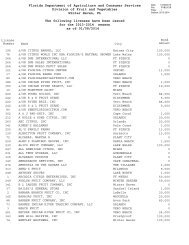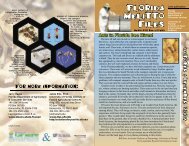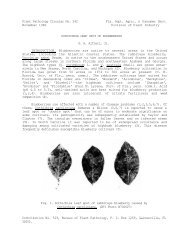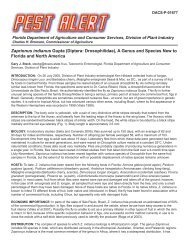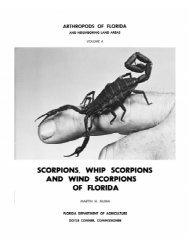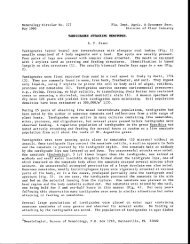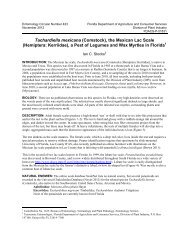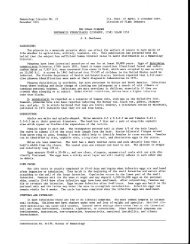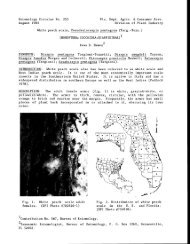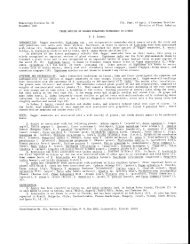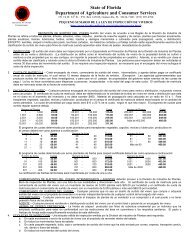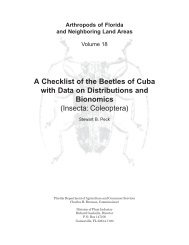2012 - Florida Department of Agriculture and Consumer Services
2012 - Florida Department of Agriculture and Consumer Services
2012 - Florida Department of Agriculture and Consumer Services
You also want an ePaper? Increase the reach of your titles
YUMPU automatically turns print PDFs into web optimized ePapers that Google loves.
16 New <strong>Florida</strong> Parent C<strong>and</strong>idates<br />
Parents Selected or Breed in <strong>Florida</strong><br />
Year C<strong>and</strong>idates Entered Parents Released Cultivars being Shoot-tip Grafted*<br />
<strong>2012</strong> 72 61 138<br />
2011 72 51 119<br />
2010 34 48 107<br />
2009 24 27 99<br />
2008 16 14 111<br />
*The number includes some DPI selections also being shoot-tip grafted to remove tristeza virus. (not considered new entries)<br />
Entries by<br />
Agency<br />
<strong>2012</strong> 2011<br />
IFAS CREC 30 32<br />
IFAS Gainesville 4 10<br />
USDA 24 0<br />
Bureau/Participant 3 2<br />
Private/ Proprietary 11 28<br />
138 different cultivars are<br />
currently being shoot-tip<br />
grafted<br />
Parent Trees<br />
Parent trees are unique germplasm belonging to a nurseryman, grower, or breeder, or on property that the<br />
owner has given written permission to a nurseryman <strong>and</strong> the department for access for observation, testing,<br />
<strong>and</strong> shoot-tip grafting. Parent trees are not used as a source <strong>of</strong> budwood for nursery trees; they only supply<br />
the initial material that is shoot-tip grafted to become a registered clonal selection.<br />
The process <strong>of</strong> selection <strong>of</strong> superior budlines helped the citrus industry exp<strong>and</strong> with new plantings <strong>of</strong> uniform<br />
fruit <strong>and</strong> uniform crops <strong>of</strong> high yield <strong>and</strong> quality. A simplification <strong>of</strong> the selection process is basically the<br />
“elimination <strong>of</strong> undesirable characteristics <strong>and</strong> increasing the desirable characteristics” <strong>of</strong> a variety. Many <strong>of</strong><br />
the Valencias, grown before the budwood program helped st<strong>and</strong>ardize the variety, were a hodge-podge <strong>of</strong><br />
many different named types <strong>and</strong> seedling selections. A high percentage <strong>of</strong> these late varieties as a group had<br />
a tendency towards bud-mutations along with carrying viruses <strong>and</strong> not yielding the volume <strong>of</strong> fruit that was<br />
possible. Other commercial varieties likewise were improved through the selection <strong>of</strong> st<strong>and</strong>ardized true-totype<br />
varieties <strong>and</strong> the subsequent improvement in yields <strong>and</strong> fruit quality. Bud improvement through<br />
selection, along with pathogen removal gave the grower a double bang for their buck, exponentially<br />
increasing production <strong>and</strong> tree survivability.<br />
16 Annual Report <strong>2012</strong> (FY 2011-<strong>2012</strong>) Bureau <strong>of</strong> Citrus Budwood Registration



